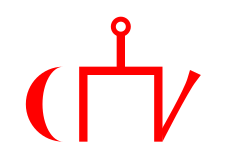Slaget vid Liegnitz
- För slaget under trettioåriga kriget, se slaget vid Liegnitz (1634), för slaget under sjuårskriget, se slaget vid Liegnitz (1760), för slaget under sjätte koalitionskriget, se slaget vid Liegnitz (1813).
| Slaget vid Liegnitz (1241) | |||||||
|---|---|---|---|---|---|---|---|
| |||||||
| Stridande | |||||||
| Befälhavare och ledare | |||||||
| Henrik II av Nedre Schlesien † | |||||||
| Styrka | |||||||
| 20 000 | 40 000 | ||||||
| Förluster | |||||||
| Uppgift saknas | 30 000 döda | ||||||
Slaget vid Liegnitz var ett slag mellan mongoliska och polsk-tyska trupper vid Legnickie Pole, omkring 10 kilometer sydost om Liegnitz (nuvarande Legnica) i sydvästra Polen.
1241 ledde Tsubotai en massiv mongolisk invasion i Centraleuropa. En del av hans armé drog fram genom Polen.
Vid Liegnitz mötte den en här av tyskar, polacker och trupper ur Tyska orden. Mongolhärens bågskyttar drev en del av den förenade hären på flykten med en skur av pilar, varpå de mongoliska lansiärerna brakade samman med de mer kraftigt bepansrade kristna riddarna. Mongolerna vek tillbaka för riddarnas första chock men vände sedan hastigt om och omringade dem.
Mongolerna gick ur striden som segrare, men förlusterna var svåra, och efter segern vände hären åter mot Asien.
Källor
- Grant, R. G.: Slag: Historiens slagfält, Bonniers, Stockholm 2006, ISBN 978-91-0-011061-1
Externa länkar
 Wikimedia Commons har media som rör Slaget vid Liegnitz.
Wikimedia Commons har media som rör Slaget vid Liegnitz.
Media som används på denna webbplats
Banner of Kingdom of Poland in the 14th century
A seal of Duke Premislaus II from 1290 shows the ruler holding a banner emblazoned with a crowned eagle. During the reign of King Ladislaus (r. 1320–1333), the red cloth with the White Eagle was established as the royal banner. The orientation of the eagle on the banner varied; its head could point either upwards or towards the hoist.
A white Malta cross on a black background, one of the insignias attributed to the Knights Hospitaller
From a heraldic Maltese cross with white background.
- Converted from the following PostScript code:
%!
/l{lineto}def
20 420 moveto 290 310 l
180 580 l 300 500 l 420 580 l
310 310 l 580 420 l 500 300 l
580 180 l 310 290 l 420 20 l
300 100 l 180 20 l 290 290 l
20 180 l 100 300 l closepath
fill
showpage
%%EOF Anachronistic representation of the royal banner of the 12th(?) or 13th to early 15th centuries.
The banner of this period would be square in shape. The heraldic eagle is here shown in early modern style.
The black eagle in a golden field was the ensign of the German kings (as opposed to the emperor) in the 12th and 13th century, but in the 14th century, it was gradually re-interpreted as representing the empire. An early reference to such a banner as "imperial" is made in an account of the burial of Charles IV (d. 1378), as der schwartz adler des richs in einem guldin veld .Författare/Upphovsman: Vorziblix, Licens: CC0
The flag of the Golden Horde, as shown in Angelino Dulcert's 1339 map. A similar flag appears in the later Catalan Atlas (1375), providing corroboration.
See also Early Mongol Flags at crwflags.com:
- One of the charges is a crescent and the other looks like a simplified form of the tamga from the flag of Idel Ural. On different copies of the flag, the crescent has different size; it is often smaller than shown here, sometimes even reduced into a simple oblique stroke and conjoined with the other charge into a si[n]gle symmetrical object; the other charge also sometimes lacks the oblique part [2, 3]. It was obviously difficult to draw the charges always the same way. The cities with this flag which are easy to identify are [2, 7, 8]: Sarai, the capital (spelled Sarra) - there is also a depiction of the ruler, "Jani Beg Lord of Sarai" ("Jambech senyor de Sarra"); Tana, present-day Azov, Russia; and Urgench, Uzbekistan (spelled Organci, with a cedilla under the c; nowadays ruined). This flag is a variant of the flag of "Emperor of Sarai" ("Emperador de Sara") from "Libro del conoscimiento de los reinos" [7] and might be the one that had really existed, considering the similarity of its charges with those from the flag of Idel Ural.
- [2] Enciclopedia universal ilustrada, vol. XXI, Espan~a Madrid: Espasa-Calpe S.A., 1968
- [3] Istorija otkric'a i istraz<ivanja, vol. I: Poc<etak istraz<ivanja; Mladinska knjiga, Ljubljana, 1979; Original title: A History of Discovery and Exploration, vol. I: The Search Begins;(C) 1973 Aldus Books Limited, London
- [7] Libro del Conoscimiento. Viajes medievales, vol. I Madrid: Fundacio'n Jose' Antonio de Castro, 2005 ISBN 84-96452-11-5 (complete edition) ISBN 84-96452-12-3 (vol. I) [e9s50]
- [8] A[p]pendices. (Ibid.)
- Tomislav Todorovic, 21 April 2007





